
AV Over IP: Are We There Yet?
Three years into the revolution, it’s time to review how the battle is progressing.
Text:/ Derek Powell
Now that all the Big Three are finally offering mainstream AV over IP solutions – alongside many, many specialist suppliers with both fibre and category cable offerings – what do you need to know about who is using the technology, where and why?
I was amused to hear an interviewer at an industry education seminar ask a panel of top-tier integrators whether their recent projects had been “100% AV over IP”.
To a person, the panel members answered: “No, not even close yet!”, but to listen to industry chatter, you could be forgiven for thinking that AVoIP was now the only game in town. It is opportune then, to shake down the current state of play and examine where we are as an industry. Will all signal transport switch to the network? And, if not, why not?
AV Asia Pacific sought answers to some of the big questions from a collection of leading suppliers in our market. While there was considerable diversity in their responses, there was a surprising degree of agreement on the big issues. We’ll get to those answers in a moment.
WHERE IS AVoIP BIG?
While every supplier has a bullish view on the state of AVoIP, finding information on specific installations in our region was a little elusive. There are some interesting reasons behind this.
Large corporates are a natural client base for AVoIP as they usually already have high-capacity, well-managed networks that can be leveraged to provide corporation-wide coverage without making massive (additional) investment in dedicated cabling infrastructure. However, many of those same large corporates are in banking or legal services and are notoriously shy when it comes to revealing details of their internal machinations, especially where data networks are concerned. For this reason, several of my respondents, while allowing that big installations were already out there or underway, were unable to name names. Amongst those who could cite major deployments was Graham Barrett, Head of Strategic Partnerships & Innovation at avt.
“Australia & New Zealand have always been early adopters of innovative new technology and since we began selling SVSI in Australia and New Zealand in 2016 the uptake has been huge,” Graham revealed. “Of around 20,000 endpoints deployed in our region there are a number of organisations with fleets of over well over 1,000. Many of the larger biggest deployments have been in Justice and Education but we have a number of Corporate deployments of similar scale — Vodafone’s new Smales Farm facility in Auckland and Lendlease’s premises in Tower Three at Barangaroo in Sydney being two examples.”
As Graham indicated, Tertiary Education has enormous market potential with most Universities well served by up-to-date data networks. Ronni Guggenheim, General Manager, Atlona International has recently toured Australia and shared the same enthusiasm for the potential of AVoIP in education. “We see a high degree of adoption across the universities around the country,” he observed. “Deakin University, being one of the leaders in digital transformation, has gone campus-wide with AVoIP adoption with more than 1000 endpoints on the horizon.”
WHERE’S IPTV FIT?
Of course, AVoIP isn’t just displacing HDBaseT and matrix switchers in its march across the nation. The closely related field of IPTV is displacing MATV systems and providing many new features while retaining relative simplicity of implementation across multiple endpoints. Exterity has been particularly active in this area and Jamie Hind, APAC Sales Director sees growth continuing.
“While we have grown in every area we do business in, hospitality and venues have been particularly hot areas for us,” he confirmed. “A flagship example of an Exterity deployment is the William Inglis Stables complex, where our solutions are used to deliver a world-class experience for the buying and selling of thoroughbred horses and attract new racing audiences through the adjacent luxury hotel.” [You can read a full report on this flagship project elsewhere in this issue – Ed]
A third, but by no means final, front of the AVoIP assault is the inroads that traditional audio manufacturers are making. Arguably, audio started the revolution in all things digital. Digital signal processing is now the norm and the migration of audio signal transport to the network is already far advanced.
CENTRALISED DSP
Perhaps the most exciting area is the potential offered by centralised signal processing over ethernet. Large-scale users, like universities are seeing the benefits of using centralised DSP processing where a single processor can serve many teaching spaces. QSC has been aggressively pushing into this area, with considerable success.
“Now people understand the benefits of adding audio, video and control signals to Ethernet networks, including the increased flexibility and scalability it offers over a purpose-built infrastructure,” commented Mike Brandes, Product Manager, QSC Video for QSC. “We anticipate more and more users to migrate to networked-based solutions, especially as we continue to work closely with IT customers and large enterprises who continue to expect AV equipment on the network with the rest of its managed assets.”
Mike pointed to two of the large-scale QSC implementations already up and running in Australia. “Australian National University in Canberra have deployed 12 theatres that run audio over a single network connection to two Q-SYS Core 510i processors (one is redundant) and 26 QSC I/O-8 Flex,” he revealed.
“Currently deployed in 120 teaching spaces, with an estimated total roll out of 1000 spaces, RMIT has deployed Q-SYS Core processors in redundant pairs with audio endpoints in each room via the Q-SYS I/O-8 Flex (120 in total),” Mike continued. “Video is deployed by AMX SVSI N3000 series with at least three endpoints in each room (120x NMX-ENC-N3121 and 240x NMX-DEC-N3221).”
WHERE’S AV OVER IP NOT THE BEST FIT?
Many industries and applications rely on other signal transports. In broadcast and particularly outside broadcast applications, Serial Digital Interface (SDI) remains a preferred format. SDI can travel over much greater distances than DVI or HDMI and great use is now being made of SDI over fibre, which can quickly establish transport paths of hundreds of metres (up to 10km is common) that can also carry multiple audio channels, telemetry, and reverse paths for camera control and cueing feeds.
Graham Barrett from avt also sees advantages in point-to-point solutions. “Transports like HDBaseT and simple cables provide stable and cost-effective transport solutions for huddle spaces and meeting rooms where there is no requirement to share or centrally process content,” he notes. “Networked AV has seen a big reduction in demand for large matrix switchers, but they are still required in some applications in such as Defence and Medical applications where compression and latency is not acceptable.”
Extron’s Director, Product Marketing, Joe da Silva agrees, but sees change on the way. “We are seeing applications being the driving force behind selecting any given technology. There are instances where compression is not acceptable and, in those cases, native video formats such as HDMI, DisplayPort, or SDI are applicable. As the performance vs. convenience trendline continues towards convenience, I’m sure that more and more systems will move to Pro AV over IP platforms like the Extron NAV Series,” he says.
With product in each camp, Atlona’s Guggenheim expressed similar views. “We see the large traditional matrix market shrinking rapidly, while matrices up to 16×16 would potentially remain in the scope of HDBaseT,” he allows. But adds this rider: “Manageability, scalability and TCO of large matrices done over AVoIP simply outperform the traditional architecture and can no longer be ignored. This is a consultant-driven market, so it is crucial for us to reach out and educate the consultants who design these systems from scratch.”
“”
Applications where the image does need to be perfect and where latency does need to be zero … in those conversations 1Gb is shown the door — and should be shown the door
— Gerry Raffaut, iMAGsystems
DESIGN DECISION DRIVERS?
Given apparent industry consensus that some design briefs are a natural fit for AVoIP while some are candidates for HDBaseT and matrix switchers, there is still a wide range of projects that could go either way. So what factors should be driving AV consultants or integrators decisions about which solution is best for a particular client?
Cost is a big factor, yet the ground here is shifting quite rapidly. Commodity data switches are dirt cheap, giving a cost edge to smaller AVoIP multi-input or multi-display installs. On the other hand, new and radically cheaper point-to point HDMI extenders are now hitting the market as manufacturers seek to fight the rise of networked AV. This means the costs of point-to-point transport and simple switchers are plummeting, and category cabling is still easy to run and quick to terminate.
As always, the design topology should be the first consideration. Does the client need to have inputs in one location available at lots of different displays? Are there many small spaces that could benefit from centralised control systems or DSP processors? Is flexible room-joining on the agenda? Do flexible work practices mean that spaces, even entire floors need to be reconfigured regularly? Is your client IT-savvy and comfortable with IP technology? If the answer to any of these questions is yes, then AVoIP should be on the agenda and we move to Big Question No.2 – should AV signals have their own dedicated network?
DEDICATED NETWORK?
What are the pros and cons of roll-your-own networks?
Before deciding whether to offer a dedicated AV network or to place your endpoints onto the existing data network you need to ask one question: Who exactly is your client? If the decision maker is the IT Department, then this is a decision for them to make (with appropriate input from the designer or integrator, of course).
There are a variety of views from within the industry as to which is the best approach. Many suppliers and Tier One integrators prefer a dedicated network for AV as it means the configuration of the network, allocation of bandwidth and selection of switch hardware can all be optimised to suit the requirements of the AV encoders and decoders. Other network events, such as automatic daily data back-up routines cannot swamp the network and disrupt video feeds by gobbling up bandwidth.
On the downside, building an entirely separate cable and hardware infrastructure can largely or completely kill the price advantage of AVoIP solutions. It also negates many of the flexibilities of a converged network solution. Being able to make any network connection an input to a display is a formidable advantage and keeping everything on one network empowers a range of standard IT monitoring and diagnostic tools. Most large-scale deployments, like universities or large corporate users are committed to the idea of a converged solution.
CLIENT IT DEPARTMENTS
As we’ve discussed, whether to put AV transport on the existing network or build your own is a decision best made early in the design process. Either way, though, establishing a solid relationship with the IT department is still crucial. The old attitude of “Not on my network you don’t” is passing quickly but there’s still plenty of resistance. While some IT chiefs see AV as an unwelcome addition to their workload and a way to bog down network speed, others are recognising the opportunity. Many CIOs now realise they can use the provision of additional, high-profile AV services as a bargaining chip to upgrade their networks (and their budgets).
In other cases, IT departments are simply being handed responsibility for AV as just another part of their job. Nowadays it is rare to hear someone refer to any audiovisual gear as ‘AV’ (monitors, speakers, mics, VC equipment are all just ‘the meeting room IT’) and the onus for procurement and upkeep is shuffled off to the IT department.
The fact remains that correct network configuration is essential to the success of any AVoIP deployment. There is more latitude if your applications are running on a dedicated network but where AV transport is implemented across a converged network, the safest bet for success is to have your client’s IT department as your customer.
1GIG OR 10? THAT IS THE Q.
Some manufacturers, including Crestron, remain committed to 1GB encoding solutions – for good reasons. 1GB Networks are still much more common and the cost of 1GB switches is far more attractive. In my experience, the best of the 1GB encoders are easily able to cope with any 1080p content, it is only higher resolutions content (4k spreadsheets are a killer) that really start to expose bandwidth limitations. 1GB encoders and decoders also run happily over copper cabling and the prevalence of existing copper wiring makes this an attractive option.
“Copper is still king when it comes to edge wiring,” declares Crestron’s Joel Mulpeter. “Fibre is great for high bandwidths, however the increased complexity around installation and the longevity of copper means that it is still the leading solution.”
Other suppliers, notably iMAGsystems and the newly released, and impressive, Extron NAV range offer solutions for both 1GB and 10GB networks. This means also that both copper and fibre are well catered for. Extron’s Joe da Silva is emphatic that AVoIP systems should be infrastructure agnostic.
“There is no single answer to what physical medium will be used with these systems. Copper and fibre each offer their own unique benefits and it will be the application that drives those decision points for customers,” Joe points out.
iMAGsystems also offers solutions that span the range of network options. “With the JPEG2000-based Thunder and the H.264-based Rain we have [1GB] solutions that cover the majority of the market,” notes Gerry Raffaut, iMAGsystems CEO. “We also have another option, a SDVoE-based 10Gb product in Lightning to reach outside those applications where 264 and 1Gb won’t suffice. We recognise the need for all three.”
“If you’re happy with the picture quality of a 1Gb system, for applications where the image doesn’t need to be perfect, and where latency isn’t a concern, then a 1Gb solution will do,” Gerry continued. “But there are applications where the image does need to be perfect and where latency does need to be zero. And in those conversations 1Gb is shown the door — and should be shown the door. For iMAGsystems, when 1Gb taps out, obviously we steer those projects towards Lightning.”
“”
The transition to AVoIP won’t happen overnight… the timeline of this transition is anybody’s guess but Extron is certainly ready to support both approaches
— Joe Da Silva, Extron
EACH-WAY BET
To return to the original question: will AVoIP carry all before it? When we asked our key suppliers, we discovered the answer depends a little on the product mix that each is currently holding. In general, though, the industry was far from falling for its own hype.
Jamie Hind, Sales Director APAC at Exterity was adamant that IP is clearly the dominant force in the market. “Within a decade, it’s likely that every new project will be AVoIP,” he declared.
Lightware’s Jacques Van Deventer, while allowing that it is early days, reckons that not all signals are IP bound. “There are different advantages for traditional AV and VOIP,” he points out. “For example, traditional AV provides pixel perfect transmission, whereas with AVoIP you can design asymmetrical systems”.
Graham Barrett from avt is a little more bullish for AVoIP but is still sure that a hybrid signal transport market will be with us for some time. “Although networked AV is quickly taking over in applications requiring large-scale or long-distance transport, HDBaseT still provides a cost-effective solution for smaller and simple in-room applications,” he notes. “The market for huddle and collaborative spaces is huge and growing but very cost conscious and is unlikely to transition from HDBaseT and equivalents until the price and simplicity of similar networked AV solutions is on-par.”
“Both solutions are growing independent of each other and not directly impacting or cannibalising the sales of the other.” declares Crestron’s Joel Mulpeter. And he is in rare agreement with Graham Barrett on the reason: “This is because there are still a multitude of situations where a simple HDBaseT extender is the right solution and it makes more sense to go down that path rather than running AV over IP due to both cost and complexity.”
Extron also sees AVoIP taking time to establish. “The transition to AVoIP won’t happen overnight so there are still a good number of projects in the planning and deployment phases that use HDBaseT technology. The timeline of this transition is anybody’s guess but Extron is certainly ready to support both approaches,” according to Joe da Silva. “Between our DTP and XTP Systems that use HDBaseT technology and our recently introduced NAV Pro AV over IP platform.”
To sum up, it seems certain that AVoIP will establish itself firmly in certain niches – particularly tertiary education and large corporates – and has already made a good start in Australia and New Zealand at least. That said, the expanding marketplace in smaller systems like huddle spaces and the continuing resilience of broadcast industry means that other digital transports, HDMI, HDBT and SDI have plenty of life in them yet.


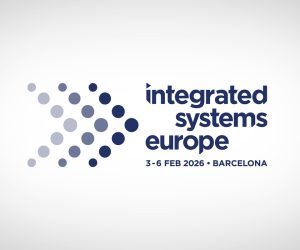


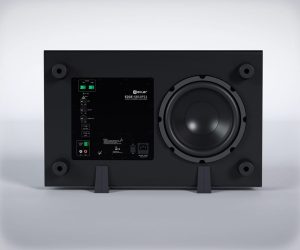



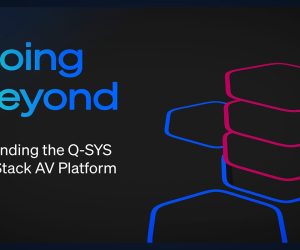
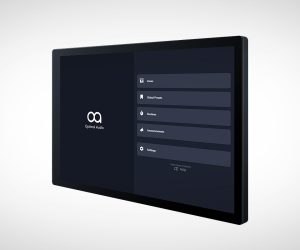

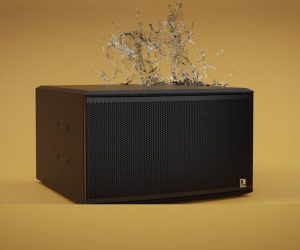


RESPONSES